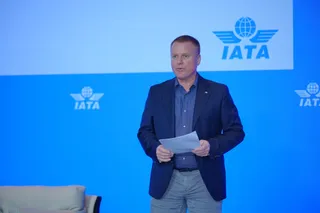Command Profile - PEO STRI
Contact Our Team
For more information about how Halldale can add value to your marketing and promotional campaigns or to discuss event exhibitor and sponsorship opportunities, contact our team to find out more
The Americas -
holly.foster@halldale.com
Rest of World -
jeremy@halldale.com
The Orlando-based command’s Project Manager (PM) Combined Arms Tactical Trainers (CATT) with Assistant Project Manager (APM) of Medical Simulation (MEDSIM) is working “To put the power of simulations into the hands of our Warfighters.”
The Program Executive Office (PEO) for Simulation Training and Instrumentation (STRI) is the U.S. Army’s acquisition and contracting center. Nearly all Soldiers deployed to the Overseas Contingency Operations have trained on a PEO STRI-derived device. Some of these training aids and simulations include the Counter Improvised Explosive Device, Engagement Skills Trainer 2000, Mobile Military Operations on Urban Terrain, Aviation Combined Arms Tactical Trainer, Synthetic Environment Core and Medical Simulation Training Centers.
M&S for Medical Operations
One of the fastest growing technology areas is the modeling and simulation in support of medical operations. Medical simulation brings new technologies to a field unaccustomed to simulation or the associated tools. Project Manager (PM) Combined Arms Tactical Trainers (CATT) with Assistant Project Manager (APM) of Medical Simulation (MEDSIM) is working “To put the power of simulations into the hands of our Warfighters.”
MEDSIM is responsible for paving the way to provide the best medical training in the U.S Army with a standardized training platform. The MedSim program has helped saved and benefited service members, medical professionals and combatant commanders in Operation New Dawn (OND) Iraq and Operation Enduring Freedom (OEF) Afghanistan, and in all medical facilities in the U.S Army.
Soldiers enter combat knowing that, if they become a casualty, they will get the very best combat medical care in the history of warfare. This knowledge enables Soldiers to accomplishing difficult missions under extraordinary circumstances. It is this battlefield capability that returns more combat-tested and experienced Soldiers to their units than any other combat multiplier on the battlefield. Treatment given in the first 10 minutes for hemorrhage, compromised airways or tension pneumothorax has the greatest impact on the soldier and typically determines their survival in combat; that period of time has become known as the “platinum 10 minutes”.
Lieutenant Colonel Wilson Ariza, Assistant Product Manager for Medical Simulation, (PEO STRI), has been given the important task to manage the Army Medical Simulation Program, so before U.S. soldiers deploy to a theater of combat operations, they undergo combat casualty care training at one of the PEO STRI fielded Medical Simulation Training Centers (MSTCs). The MSTC Program focuses on the first responder and combat medic and delivers systems capable of training medical tasks to joint, multi-component, interdepartmental and even coalition partner organizations. It allows standardized training to the Army, with added unit-specific modules based on the contemporary training environment.
MEDSIM first deployed MSTCs for contingency operations in 2005 to support Operation Iraqi Freedom, and since then, has continued to combine tactical skills and technology to lead the way to an integrated training platform and deploying the most comprehensive training and educational medical system available today. MEDSIM has fielded twenty-three MSTC’s locations CONUS and OCONUS, with plans for up to 34 fixed site locations and several mobile facilities.
A combination of lessons learned from current military operations and friendly engagement allows MSTCs to simulate stressors in the battlefield to test the combat medic’s ability to perform trauma management tasks under conditions they may realistically encounter on the battlefield. Through simulation technology, MSTCs create common and unique crisis scenarios using virtual controls and displays connected to virtual patient simulators to reflect physiologic changes with real-time feedback to Soldiers. Varying degrees of combat chaos are added to scenarios to increase stress levels and add to the MSTC capabilities as a powerful individual trainer and team-building tool for medical Soldiers.
"When you first walk in, it's scary. It's like, 'Wow, this is real, this is training?'" said Staff Sgt. Kelly Whitesell, a medic with the 7235th Medical Support Unit in Orlando. "Then you get into the treatments, and that is like treating a real patient." [1]
Utilizing a combination of human patient simulators and part task trainers paired with live actors, MSTCs has provided specialized training to over 500,000 combat lifesavers and medics. These are cost effective solutions in low-risk, supportive environments that have become critical elements to the success of medical military training.
The success of medical care is ultimately dependant on the knowledge and skill-sets of the medical provider. The ability of providers to make accurate assessments and take steps to provide prioritized interventions is critical. MedSim is saving lives by ensuring that each Soldier trained is evaluated by the best instructors available to ensure proficiency in combat lifesaver skills. In a USA TODAY article, Gregg Zoroya cited, “Troops trained in advanced trauma care could prevent up to 20% of combat deaths in Iraq and Afghanistan.” The Defense Health Board later said in a recommendation to the Pentagon that Enhanced Tactical Combat Casualty Care (TCCC) skills developed by military trauma specialists have already saved an estimated 1,000 lives in both OIF/OEF.
The MEDSIM office supports the Army Medical Command as it develops future plans to expand simulations beyond the battlefield and into all levels of care. These simulation and training aids will specifically focus on the skills that nurses and doctors must master as a patient moves into more definitive treatments.
Through partnerships with simulation leaders based in what has become known as “Medical City”, Orlando, Florida, MEDSIM has provided simulation based learning and total life cycle acquisition support to Veteran Health Affairs for clinical medical training applications.
Medical City, a 7,000-acre community has drawn numerous experts to Orlando maximizing the Army’s access to the latest technology for training, research and development programs. Lake Nona's Medical City is emerging not only as Orlando's fastest-growing, most innovative master-planned community, but also as a "Project of Promise" featuring Nemours Children's Hospital, M.D. Anderson Orlando's Cancer Research Institute, Orlando VA Medical Center, University of Central Florida's new College of Medicine and Health Sciences campus, Burnham Institute for Medical Research's east coast campus, and a University of Florida research facility dotting the Lake Nona Gateway Interchange in the 600-acre Science & Technology Park.
Accomplishments and BeyondMEDSIM’s accomplishments during 2011 alone have been phenomenal. The following list offers a few examples.
- The MEDSIM program has successfully managed and sustained 24 MSTC systems, (with locations CONUS and OCONUS and employing 125 people, MSTCs have total costs of $431.4 million). The successful deployment of six of these systems to the battlefield has helped meet priorities set in the Army Campaign Plan and support OIF/OEF;
- The MEDSIM program has replaced and upgraded its fleet of simulation mannequins to each of its locations;
- The MEDSIM program completed the fielding of two new MSTC sites at Ft. Benning and Camp Atterbury;
- The MEDSIM program helped deployed units in Iraq and Afghanistan employ MEDSIM’s simulators across the battlefield. The deployment of sites in Kuwait, Iraq and Afghanistan, made MSTC the first fully deployed medical training platform in the history of American warfare to implement training with state of the art medical simulators;
- The MEDSIM program coordinated and conducted the training and validation of more than 125,000 service members’ (Soldiers, Sailors, Marines, Airmen and foreign nationals) world-wide, providing medical units with advanced knowledge to assist the Warfighter in accomplishing difficult missions under extraordinary circumstances; and
- The MSTCs have been presented with the CPL Angelo J. Vaccaro award for two consecutive years for providing the best training facility in the Army.
The MSTCs offer unique and powerful learning opportunities in key competency areas, including communication, teamwork, emergent conditions and leadership, as well as tasks requiring well-practiced manual skills such as diagnostics and treatment procedures. MEDSIM believes through multi-disciplinary simulation centers and collaboration with other institutions in the military and civilian sector, quality patient care and safety will be improved for all.
The future for Medical Simulation is bright and there will continue to be a growing requirement for simulation training. MEDSIM will continue to create more medical simulation training opportunities for our Soldiers. There should be no doubt that our Soldiers can provide the best care possible to our service members when properly trained; they have and will always continue to do so. MEDSIM was one of the world’s first established military simulation Program Management offices and will continue to be a global leader in the field.
[1] From CNN.com article, December 3, 2010 for I/ITSEC


.png/r%5Bwidth%5D=320/7f2021f0-9a0d-11f0-b8f7-272ce5993c28-nano-banana-2025-09-24T11-07-03%20(1).webp)